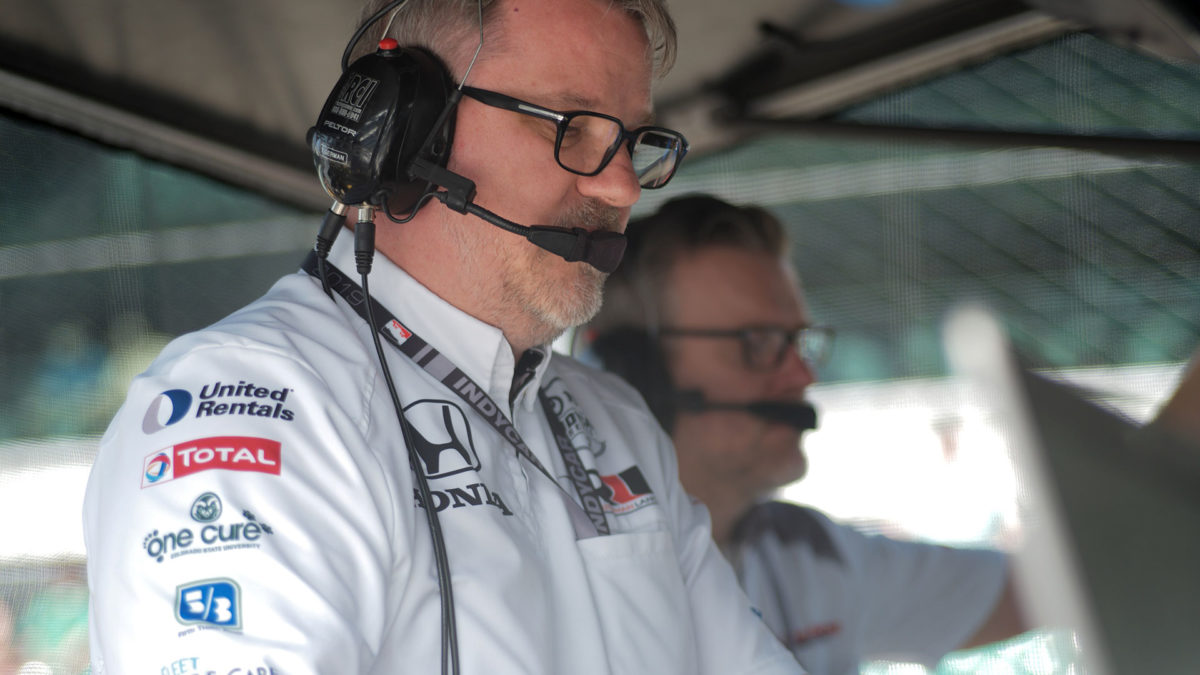Q&A With Tom German
 |
| Tom German |
The 2020 NTT INDYCAR Series kicks off on June 6 with the Genesys 300 on the 1.5-mile Texas Motor Speedway oval. Rahal Letterman Lanigan Racing's INDYCAR Technical Director Tom German answered a few questions in preparation for the event.
With the start of the season put on hold for 2.5 months, what has been the focus and how has the engineering group interacted despite the shelter-in-place situation?
“For the RLL INDYCAR engineering team, the work-from-home transition was seamless. Our normal schedule includes a variety of locations. Between race events, track tests, development tests, and virtual testing we often collaborate and share results from different locations. For us, the key difference has been working in the same location every day.
“Like many across the world, our biggest challenge was uncertainty. Fortunately, we knew there would be another opportunity to compete in the Indianapolis 500 and preparation became our primary focus. While our focus remained constant, the details changed several times. Track tests and wind tunnel tests were cancelled, the race was moved to August, and tire quantities were reduced. With the extra time, we could explore each of these changes and adjust. I was impressed with the team’s ability to absorb change and focus on “new" solutions, while dealing with the uncertainty surrounding all of us."
Every challenge presents opportunities. Have any positives come out of the hiatus in terms of new methods of working together or etc?
“The INDYCAR iRacing Challenge was a good opportunity. We inverted our engineering structure and gave some of our younger engineers the opportunity to lead. This approach gave the less-experienced engineers a platform to demonstrate their capability, but it also yielded some unexpected insights. It was great to see the team working together, having fun, and pushing each other."
[adinserter name="GOOGLE AD"]What are some of the challenges all teams face at Texas Motor Speedway?
“Texas is always challenging. Each year a complex combination of handling, tire degradation, and pit strategy define the results. With a new tire specification, the Aeroscreen’s first race, 35-lap maximum stints, and the 2-1/2 month break; we expect an exciting race. Our initial focus is tuning our setup to the 2020 tire specification, aerodynamics and mass distribution. Since this will be the first time RLL has run the 2020 Aeroscreen on an oval and the new tire specification, getting good direction in practice is critical."
What is the impact of the 35-lap max on a set of tires in terms of strategy?
"Although limiting the maximum tire stint to 35 laps reduces strategy options, the tire allotment gives teams a lot of flexibility. Teams may use six or seven sets of tires in the race (five or six pit stops). With six sets, the first stop would be between Laps 25-35. If a team elects to do an extra pit stop and use seven sets of tires, the pit windows are wide open. They could stop on an early yellow and attempt to catch another yellow after the six-set teams have pitted on green or they could trade off fresh tires and track position on a late race pit stop.
“Key factors will be the timing of yellow flags, the ability to pass on fresh tires, and the tire degradation. Although we will get some data in the afternoon practice, the night race may be significantly different."
The team ran well last year with pole for Takuma and a third-place finish for Graham. Will the addition of the Aeroscreen negate that or will the fundamental setup carry over?
“Takuma did a great job in qualifying and Graham endured in the race and brought home a podium finish. While some of the 2019 basics are valuable, ovals are all about the details. All the INDYCAR competitors are strong, differentiation will come from making decisions for the race based on data collected in practice. The team that leverages the practice data the best will have a speed advantage in the race. But, with wide open strategy options, speed may not be enough to win."
The last time we ran on an oval was nine months ago. Is there a different mindset to running an oval vs. road or street course? From an engineering, crew and driver standpoint?
“Yes, INDYCAR is the only series in the world that offers this much diversity. The difference between ovals and road course is the most significant. Road course events are about finding the right compromise for lap time, you rarely optimize a single corner. Ovals are more focused; engineers and drivers strive to find the best combination of driver line and setup, often for just one corner. Changes at ovals are also smaller, a slight change to the driver’s line and fine tuning the setup improve performance.
“Mindset is important, everything at an oval happens fast. Running two or three cars wide at 200 mph demands constant focus. While a road course mistake may cost a position, a mistake at Texas will end your race. With nine months since the last oval race and only one practice session, ramping up quickly is key."